<< Previous | Displaying results 5101-5150 of 6769 for "" | Next >>
The American Jewish Joint Distribution Committee helped to locate relatives of Blanka's who lived in the United States. Blanka crossed the Atlantic Ocean in the winter on the SS Marine Marlin, a troop transporter. The trip took over two weeks during storms and rough seas. The ship was damaged, and Blanka, along with the other refugees traveling in the lowest quarters, had to walk in water for days. This photograph shows Blanka's embarkation card for the SS Marine Marlin, with a sailing date in January…
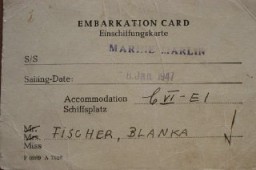
Abraham Kaplan and his wife Maria at their home in Paterson, New Jersey. He was the half brother of Blanka's grandmother. Blanka lived with Abraham and Maria when she came to the United States. She loved them dearly.
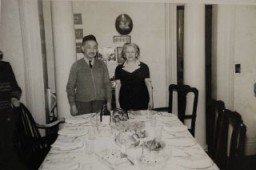
This wedding photo of Blanka and her husband Harry appeared in an Oregon newspaper. Blanka has no other photo of their wedding. "The war taught me that things are not important," she says.
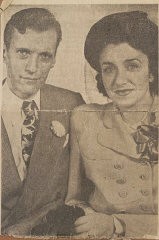
Blanka and Harry in Oregon after they were married. Her husband was an inspector for General Dynamics.

Blanka (middle row, third from right) graduates to become a pediatric nurse. December 1947.
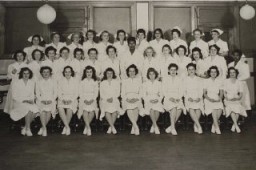
Blanka and Harry celebrate their wedding anniversary in a New York café. At the time, Blanka was expecting their first child.
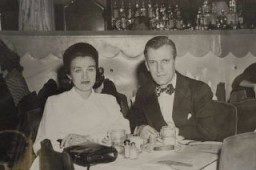
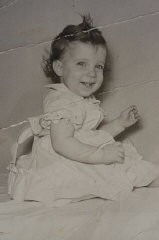
Wedding of Blanka Rothschild's daughter, Shelly, in 1974. The wedding took place at a temple in New York.
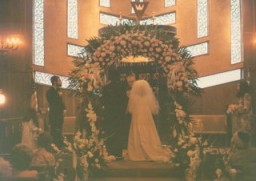
Blanka (right) with her daughter, Shelly, after Shelly's wedding. New York, 1974.
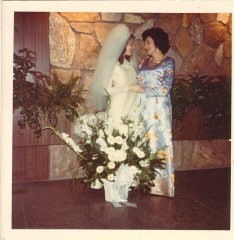
Blanka and Harry with their first and only grandchild, Alexis Danielle.
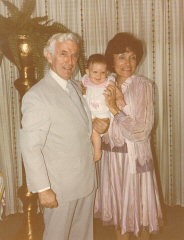
Blanka relaxes with her granddaughter, Alexis Danielle, and a family dog.
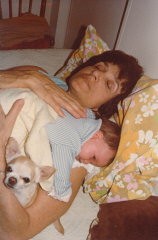
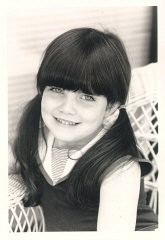
Shelly and Alexis Danielle, Blanka's daughter and granddaughter.
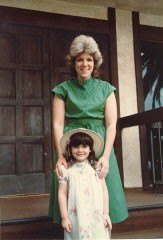
Harry teaching granddaughter Alexis Danielle how to swim, probably in San Diego, California.
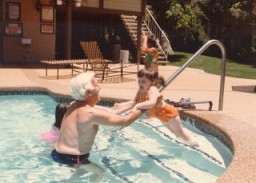
Blanka's daughter Shelly, son-in-law, and granddaughter Alexis Danielle on a vacation.

Blanka and Harry with their daughter Shelly, son-in-law, and granddaughter Alexis Danielle. San Diego, California.
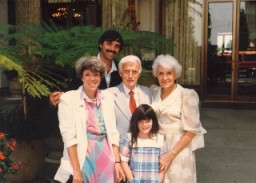
Blanka's granddaughter Alexis Danielle graduates from university in May 2000.

Photograph of Blanka's granddaughter, Alexis Danielle, and her fiancé.

This picture, taken in 2004, shows Blanka Rothschild holding one of her prewar family photographs.
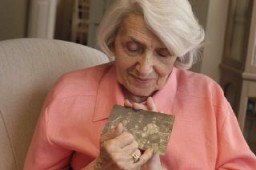
Blanka was an only child in a close-knit family in Lodz, Poland. Her father died in 1937. After the German invasion of Poland, Blanka and her mother remained in Lodz with Blanka's grandmother, who was unable to travel. Along with other relatives, they were forced into the Lodz ghetto in 1940. She and her mother were deported to the Ravensbrueck camp in Germany in 1944. From Ravensbrueck, Blanka and her mother were sent to a subcamp of Sachsenhausen. Blanka was forced to work in an airplane factory…
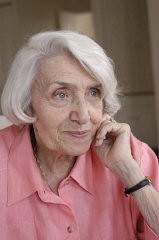
Photograph of Blanka Rothschild taken in 2004. Blanka was an only child in a close-knit family in Lodz, Poland. Her father died in 1937. After the German invasion of Poland, Blanka and her mother remained in Lodz with Blanka's grandmother, who was unable to travel. Along with other relatives, they were forced into the Lodz ghetto in 1940. She and her mother were deported to the Ravensbrueck camp in Germany in 1944. From Ravensbrueck, Blanka and her mother were sent to a subcamp of Sachsenhausen. Blanka…
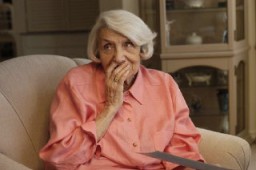
Blanka Rothschild and Neenah Ellis look through Blanka's photograph albums. Photograph taken in 2004.

This 1925 photograph taken in Kolbuszowa, Poland, shows Norman Salsitz (at right) with his sister Rachel (left) and brother David (center). With the end of World War II and collapse of the Nazi regime, survivors of the Holocaust faced the daunting task of rebuilding their lives. With little in the way of financial resources and few, if any, surviving family members, most eventually emigrated from Europe to start their lives again. Between 1945 and 1952, more than 80,000 Holocaust survivors immigrated to…
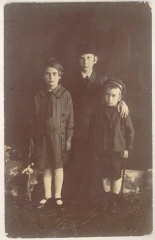
Prewar portrait of Norman's parents, Isak and Ester, taken in Kolbuszowa, Poland, in 1934 when Isak's brother visited from America. Isak's six siblings all emigrated to America. Isak and Esther, who remained in Kolbuszowa, both perished during the Holocaust: Isak was killed in the Kolbuszowa ghetto on April 28, 1942, and Esther was killed in the Belzec killing center in July 1942. With the end of World War II and collapse of the Nazi regime, survivors of the Holocaust faced the daunting task of…
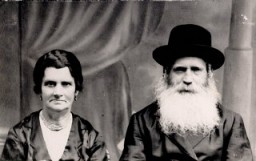
This 1929 portrait shows Norman Salsitz with his niece, Szandla Weinstein. Picture taken in front of a photographer's backdrop in the Kolbuszowa marketplace.
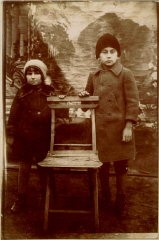
Norman's sisters Malcia, Matla, and Rachel eat bagels in the doorway of their mother's store. The red and white stripes on the door frames indicate that the store carried cigarettes, matches, and sugar, consumer goods regulated by a state monopoly. Kolbuszowa, Poland, 1934. With the end of World War II and collapse of the Nazi regime, survivors of the Holocaust faced the daunting task of rebuilding their lives. With little in the way of financial resources and few, if any, surviving family members, most…
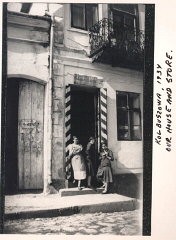
In this 1934 portrait of Norman Salsitz's family, Norman is seated in the front row (at left). In the top row, center, an image of one of Norman's brothers has been pasted into the photograph. This is seen by comparing the size of the brother's face with the others pictured. Pasting in images of family members who could not be present during family portraits was common practice and in some cases the resulting composite images are the only remaining visual records of family groups.
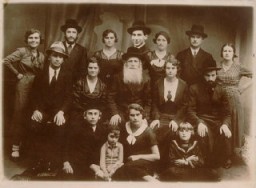
Four of Norman's sisters, the maid, and Norman's mother, Esther, do laundry in the yard of their home. Kolbuszowa, Poland, 1934.
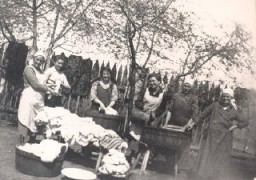
Survivors of the Wöbbelin camp wait for evacuation to an American field hospital where they will receive medical attention. Germany, May 4-6, 1945.
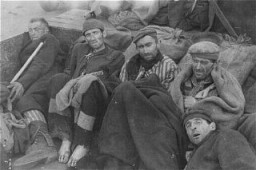
Survivors in a barracks at the Wöbbelin concentration camp. Germany, May 4–5, 1945.
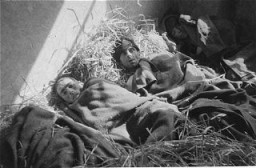
After the liberation of the camp, the US Army ordered the local townspeople to bury the corpses of prisoners killed in the camp. This photograph shows troops observing a moment of silence at a mass funeral for victims of the Wöbbelin camp. Germany, May 7, 1945.
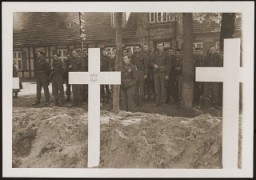
German civilians from Ludwigslust file past the corpses and graves of 200 prisoners from the nearby concentration camp of Wöbbelin. The US Army ordered the townspeople to bury the corpses on the palace grounds of the Archduke of Mecklenburg. Germany, May 7, 1945. Outraged by what they found upon entering the camp, the ranking Allied commanders in the area forced civilians from the nearby towns of Schwerin, Hagenow, and Ludwigslust to view the concentration camp and then bury the bodies of prisoners…
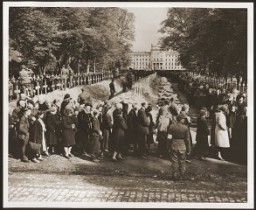
After the liberation of the Wöbbelin camp, US troops forced the townspeople of Ludwigslust to bury the bodies of prisoners killed in the camp. This photo shows US troops assembled at the mass funeral in Ludwigslust. Germany, May 7, 1945.

Under orders from officers of the US 8th Infantry Division, German civilians from Schwerin attend funeral services for 80 prisoners killed at the Wöbbelin concentration camp. The townspeople were ordered to bury the prisoners' corpses in the town square. Germany, May 8, 1945.
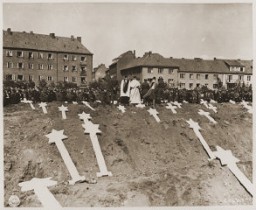
Flags of US Army liberating divisions on display at the United States Holocaust Memorial Museum in Washington D.C.
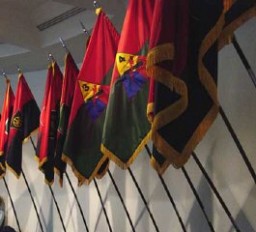
Flags of liberating divisions are presented during a ceremony at the Museum's Tribute to Holocaust Survivors: Reunion of a Special Family. This tribute was one of the United States Holocaust Memorial Museum's tenth anniversary events. Washington, DC, November 2003.
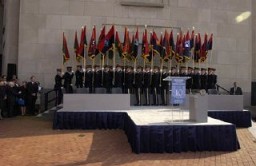
Ben Meed, President, American Gathering of Jewish Holocaust Survivors, standing in front of flags of the liberating divisions. This photograph was taken as he spoke at a ceremony held during the United States Holocaust Memorial Museum's Tribute to Holocaust Survivors: Reunion of a Special Family. This was one of the Museum's tenth anniversary events. Washington, DC, November 2003.
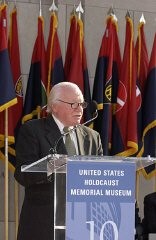
Elie Wiesel became Founding Chairman of the United States Holocaust Memorial Council in 1980. Here, he speaks at a ceremony held during the Tribute to Holocaust Survivors, one of the Museum's tenth anniversary events. Flags of US Army liberating divisions form the backdrop to the ceremony. Washington, DC, November 2003.
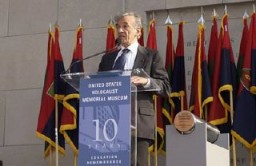
View of a ceremony held during the Museum's Tribute to Holocaust Survivors: Reunion of a Special Family, one of the United States Holocaust Museum's tenth anniversary events. Flags of the liberating divisions form the backdrop to the ceremony. Washington, DC, November 2003.

Scene during the 2001 Days of Remembrance ceremony, in the Rotunda of the US Capitol. Flags of the liberating divisions feature prominently in the Museum's Days of Remembrance ceremonies. Washington, DC, 2001.
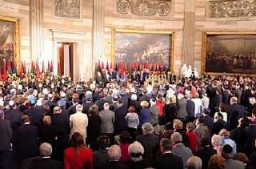
Insignia of the 65th Infantry Division. The 65th Infantry Division was nicknamed the "Battle Axe" after the divisional insignia, a halbert (an axe on a pole), used to cut through the enemy during medieval times.

Insignia of the 45th Infantry Division. The 45th Infantry Division gained its nickname, "Thunderbird" division, from the gold thunderbird. This Native American symbol became the division's insignia in 1939. It replaced another previously used Native American symbol, a swastika, that was withdrawn when it became closely associated with the Nazi Party.
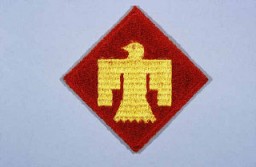
Insignia of the 42nd Infantry Division. The nickname of the 42nd Infantry Division, the "Rainbow" division, reflects the composition of the division during World War I. The division was drawn from the National Guards of 26 states and the District of Columbia. It represented a cross section of the American people, as the rainbow represents a cross section of colors.
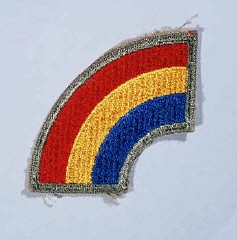
Insignia of the 36th Infantry Division. The 36th Infantry Division, the "Texas" division, was raised from National Guard units from Texas and Oklahoma during World War I. The "T" in the division's insignia represents Texas, the arrowhead Oklahoma. The division was also sometimes called the "Lone Star" division, again symbolizing its Texas roots.
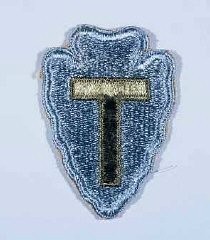
Insignia of the 29th Infantry Division. "Blue and Gray" was coined as the nickname of the 29th Infantry Division by the division's commander during World War I. The name commemorates the lineage of the mid-Atlantic states' National Guard units that formed the division, many with service on both sides during the Civil War.
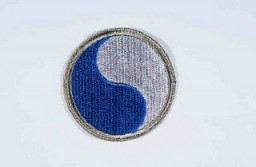
Insignia of the 69th Infantry Division. The 69th Infantry Division gained the nickname the "Fighting 69th" during World War II. The name has no heraldic significance, but simply conveys the esprit de corps of the division.
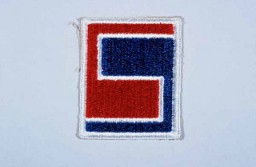
Insignia of the 71st Infantry Division. The nickname of the 71st Infantry Division, the "Red Circle" division, is based upon the divisional insignia (which includes a red circle).
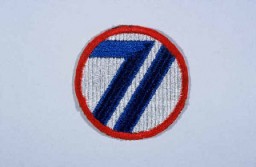
Medical corpsmen of the US 71st Infantry Division, 3rd US Army look on as captured German soldiers remove bodies from inside a barracks in Gunskirchen. In the foreground, a Jewish girl lies huddled in the straw on the floor of the barracks. Gunskirchen, Austria, May 7, 1945.
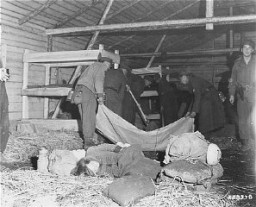
Corpses of prisoners killed in the Gunskirchen camp. Gunskirchen was one of the many subcamps of the Mauthausen camp. It was liberated by US forces in early May 1945. Gunskirchen, Austria, photo taken between May 6 and May 15, 1945.
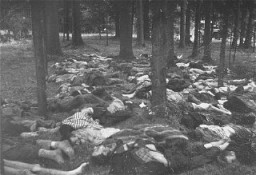
Corpses of victims of the Gunskirchen subcamp of the Mauthausen concentration camp. Austria, after May 5, 1945.
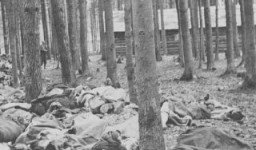
We would like to thank Crown Family Philanthropies, Abe and Ida Cooper Foundation, the Claims Conference, EVZ, and BMF for supporting the ongoing work to create content and resources for the Holocaust Encyclopedia. View the list of donor acknowledgement.